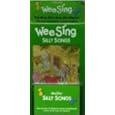Think of an infant..their first play experiences are their caretakers. Eyes meet eyes, hands gently encourage movement and touch of tiny hands, mouths smile at other mouths, sounds are echoed. All of this in play and love.
Children with severe mulitple impairments need encouragement and direct teaching to learn skills that children without impairments (or with limited impairments) pick up from their environment. Think of all the skills and knowledge that children pick up visually. Take away that vision, put a child in a soft environment like a crib with soft blankets, soft clothing, etc. and the child is put into a sensory deprivation chamber. There is little to explore, exploration = learning, so the child becomes more impaired than he or she should be with the one disability alone. When you add other disabilities to either loss of sight or loss of hearing or movement, you are not just adding disabilities, you are compounding them. According the Lili Nielsen, researcher and founder of the Active Learning technique for children with visual impairments (and multiple impairments) a child is not deaf+blind+quadriplegic; the learning disability has been increased by a multiplier: deafXblindXquadriplegic.
You as teacher (whether parent, aunt, friend, teacher, therapist, etc.) are the child's first playscape. Feeling your voicebox and having them feel yours, echoing their sounds, creating new sounds together allows the child to engage in vocal play. Putting your hands under a child's and allow them to play with your hands, your fingers. Encourage them to feel your face, lips, nose, hair. Label what they are doing and label when you touch hands, fingers, legs, feet, face, tummy etc. All of this is directly teaching the child, sensory input, labelling, breath control, how to use their bodies. The games need to be repeated often and the child encouraged to mimic you after you have mimicked the child. It should be fun, songs can be made up and included. If you don't sing, make it a chant.
Amazon.com:
Great music: We Sing Series: Silly Songs, Nursery Rhymes, Travel Songs
W(6)
11.
Toddler Favorites by Music for Little People (Audio CD - 1998)
Buy new: $6.98 $6.97
11 new from $3.97 10 used from $5.40
Get it by Tuesday, Dec 14 if you order in the next 20 hours and choose one-day shipping.
Eligible for FREE Super Saver Shipping.
(121)
 12.
12.Wee Sing: Under the Sea [VHS] by Wee Sing (VHS Tape - 1995) - Closed-captioned
Buy new: $12.98 $8.02
7 new from $8.02 20 used from $2.60
In Stock
(11)
« Previous | Page: 1 2 3 ... | Next »
Sponsored Links (What's this?)
'Wee Sing' at Penguin
Every great title in the collection available online. Sing along fun! us.penguingroup.com
Advertise on Amazon

Silly Songs by Wee Sing (Audio Cassette - 1998)
1 new from $10.985 used from $4.73


No comments:
Post a Comment